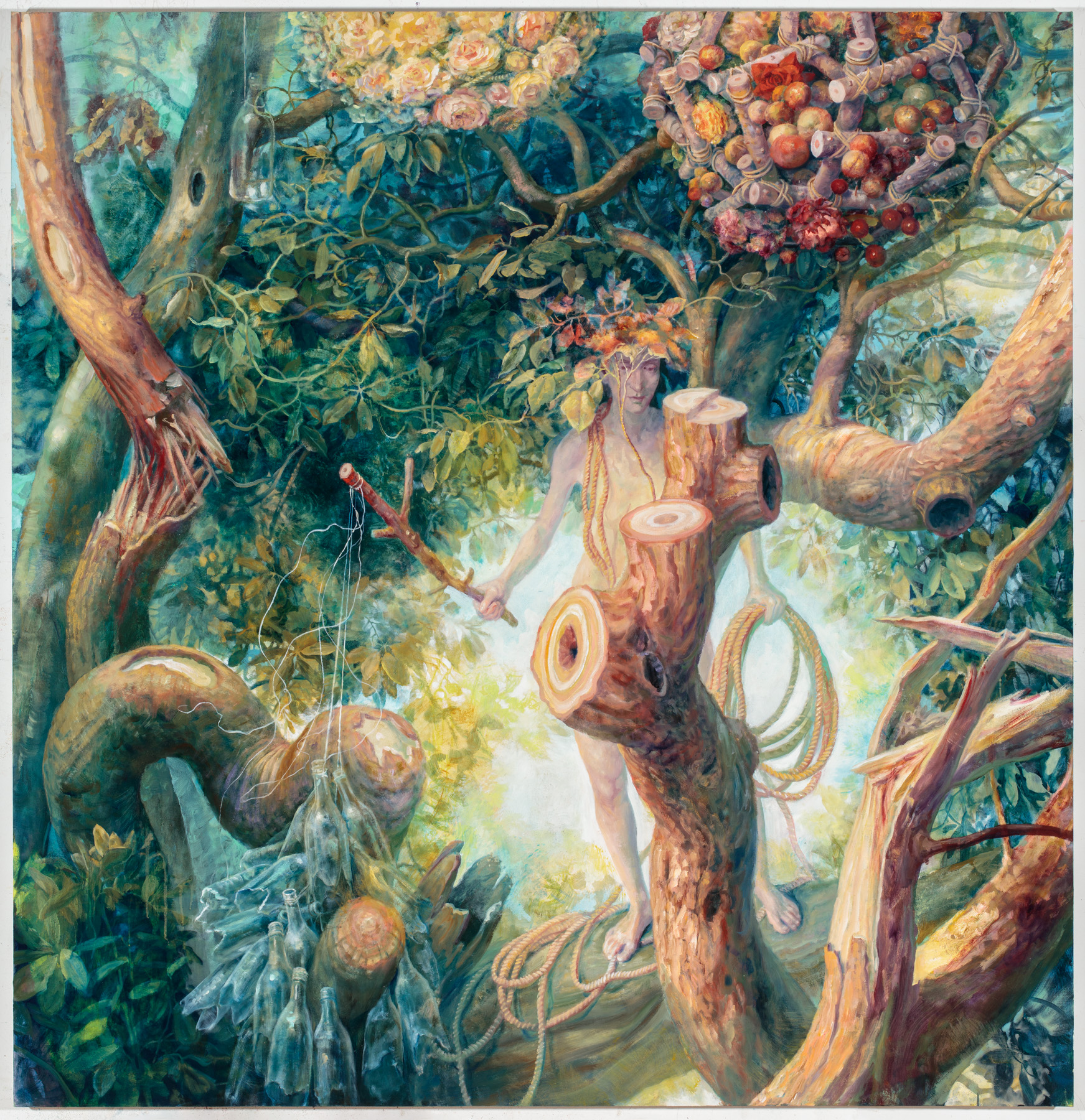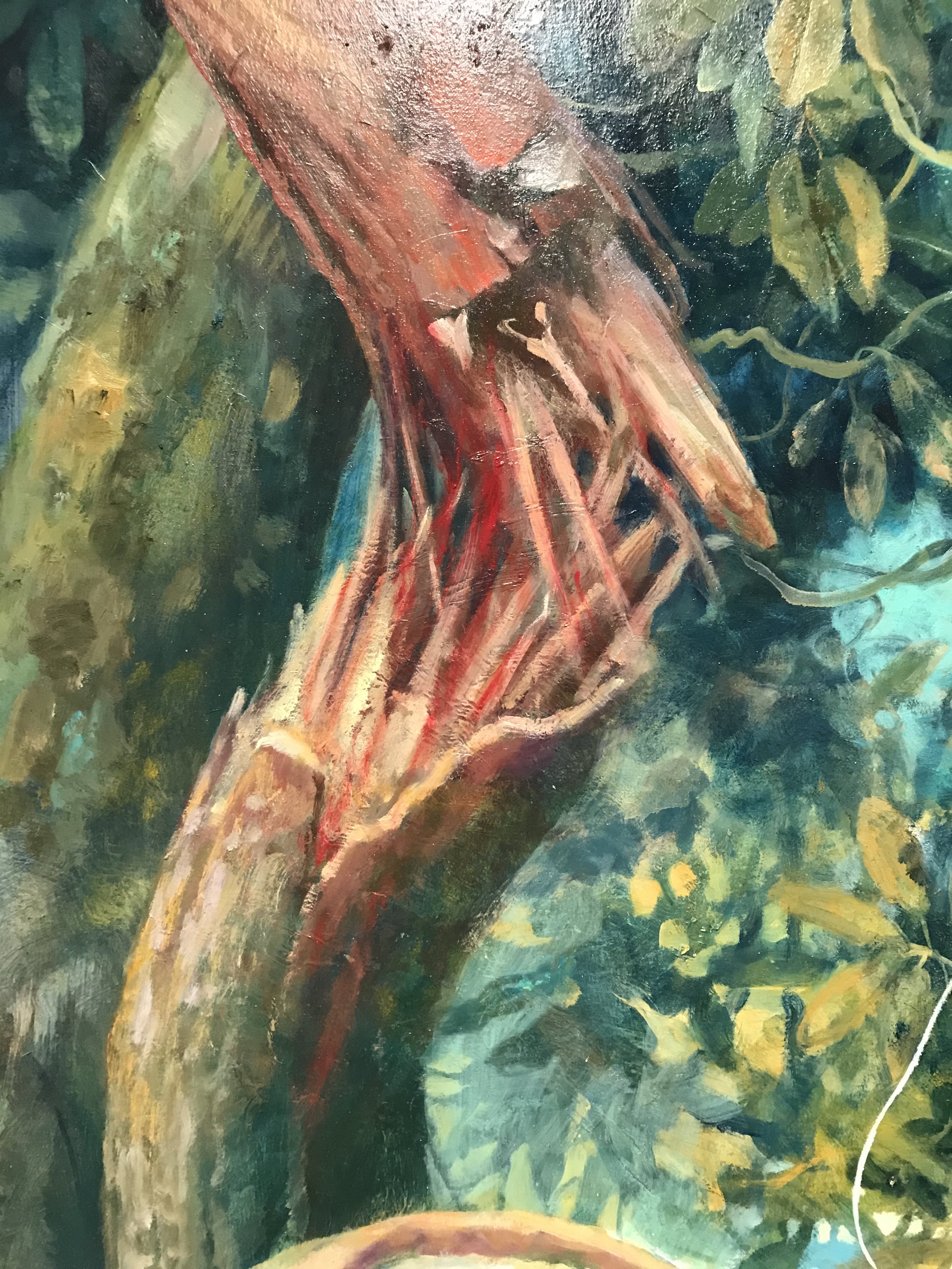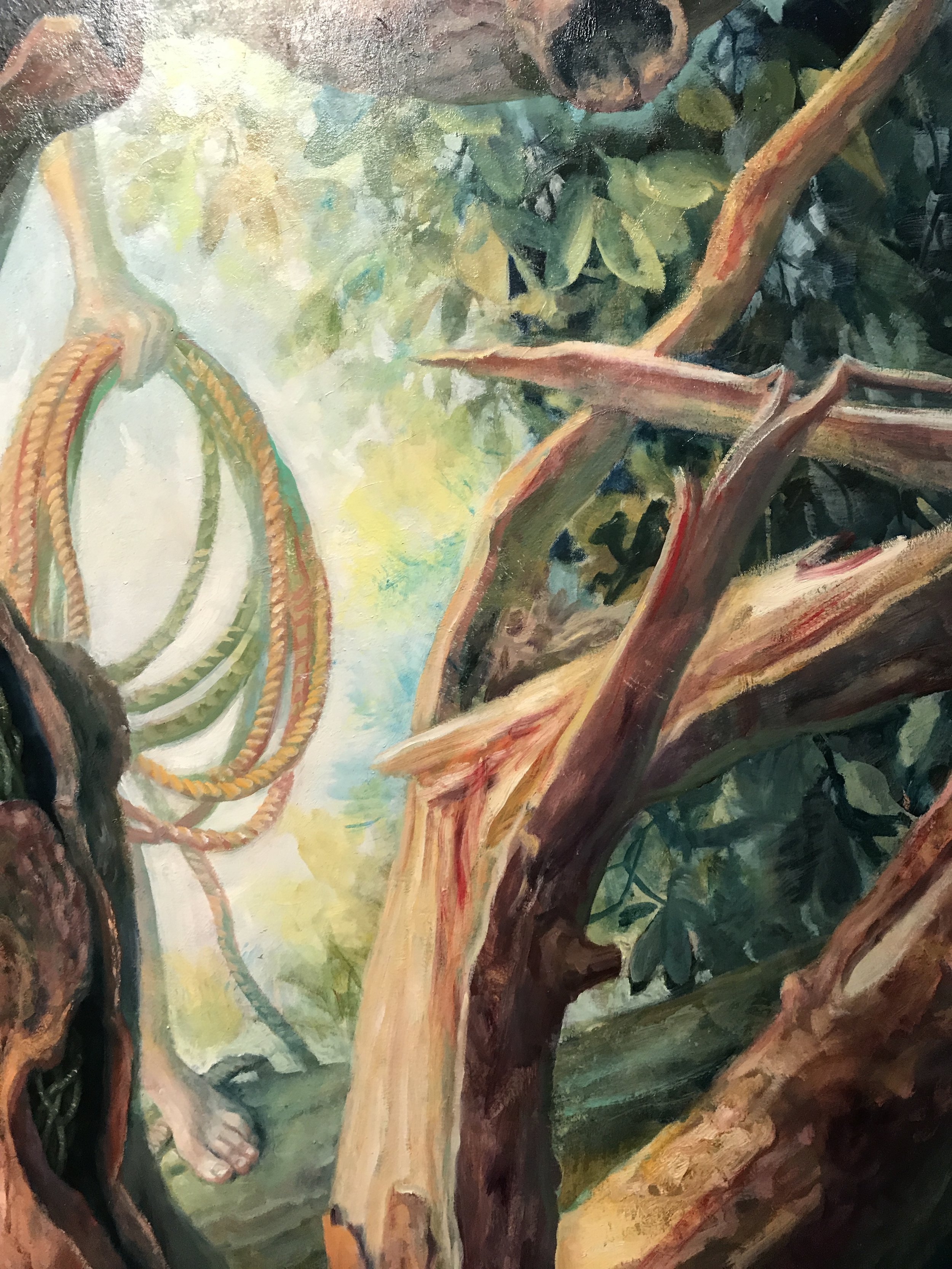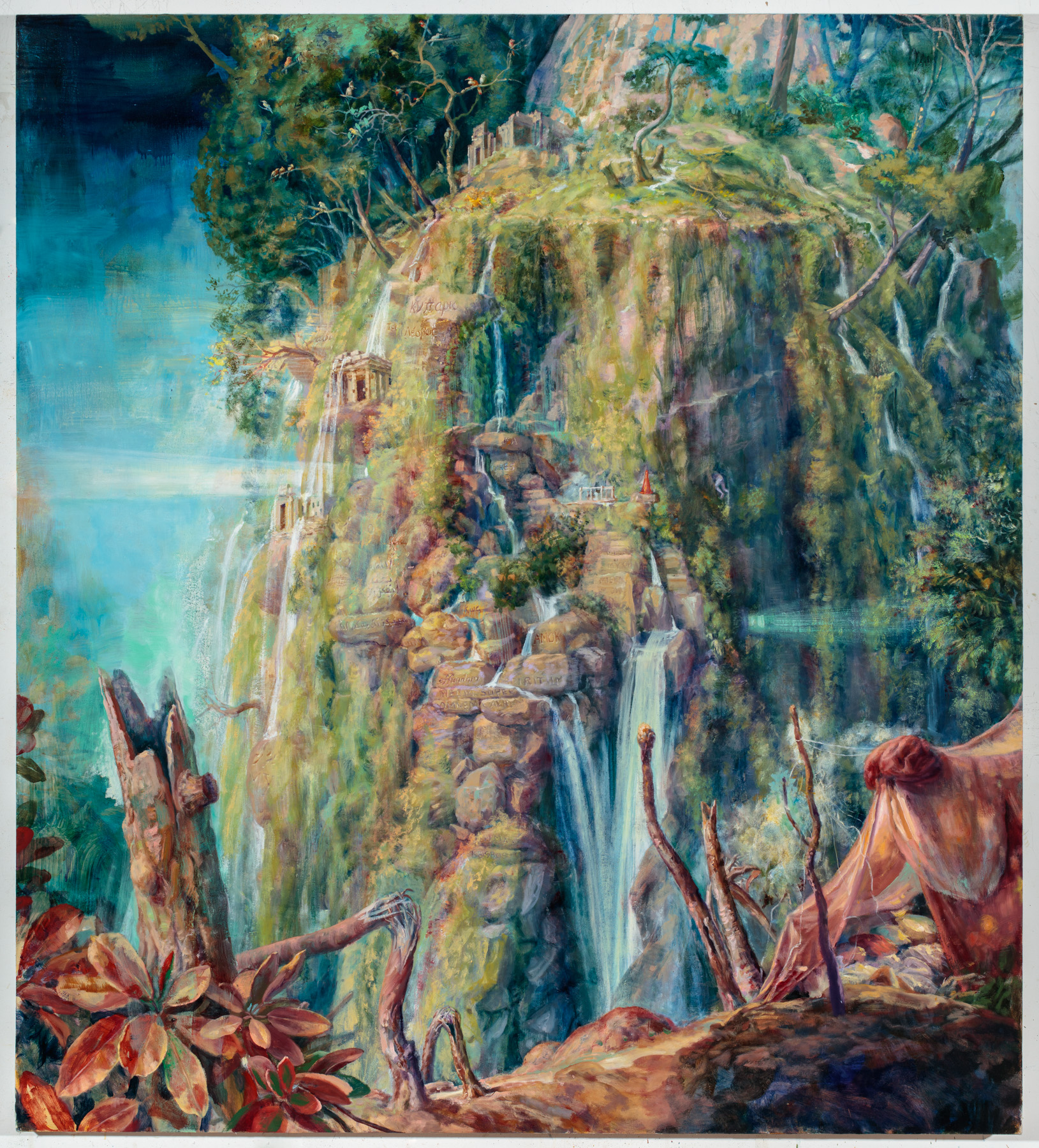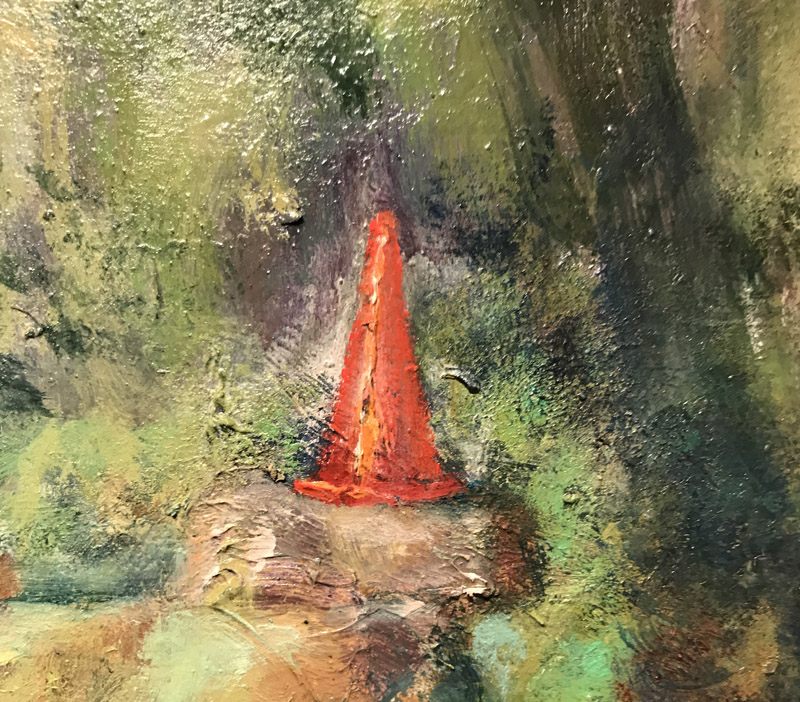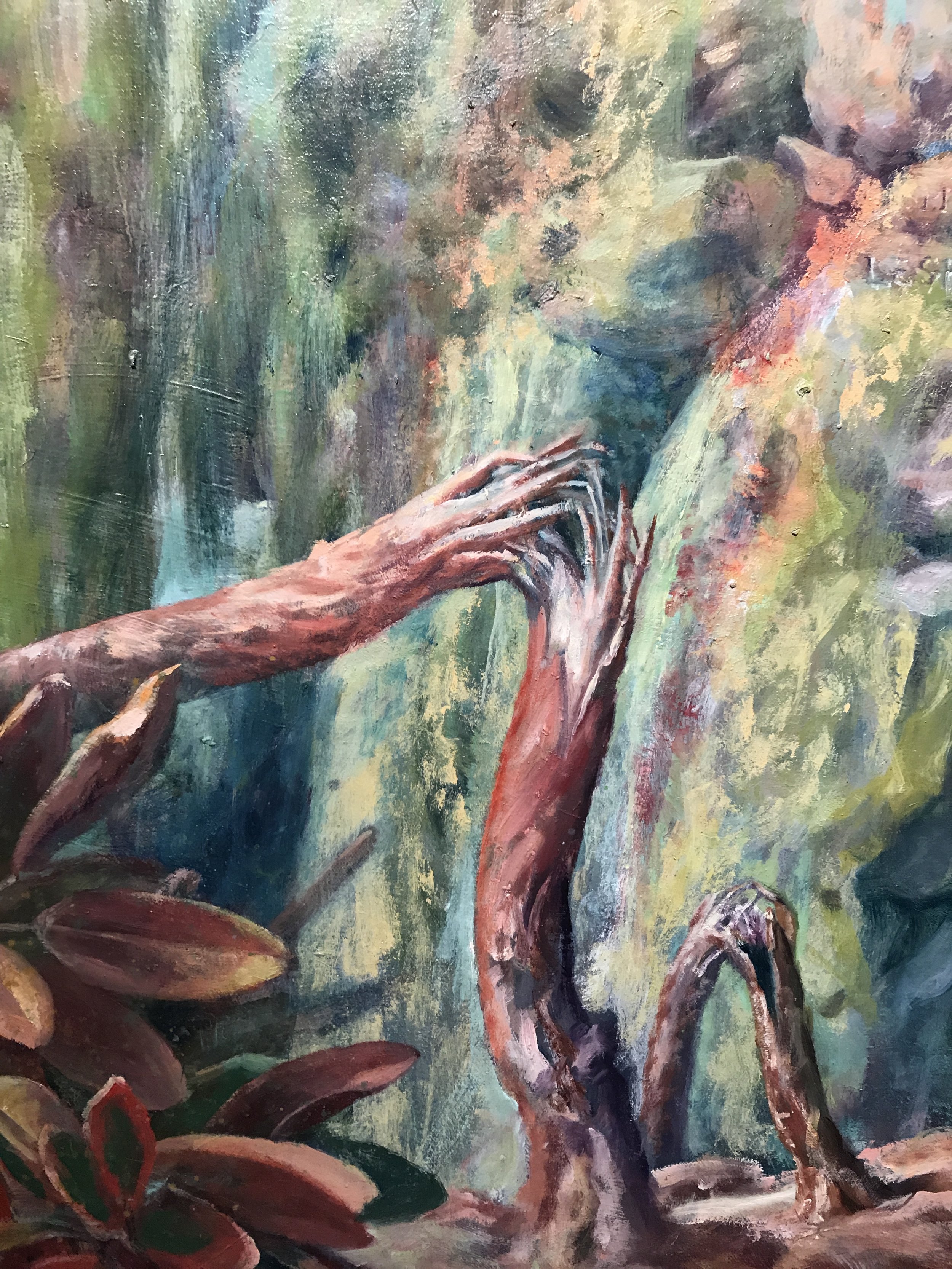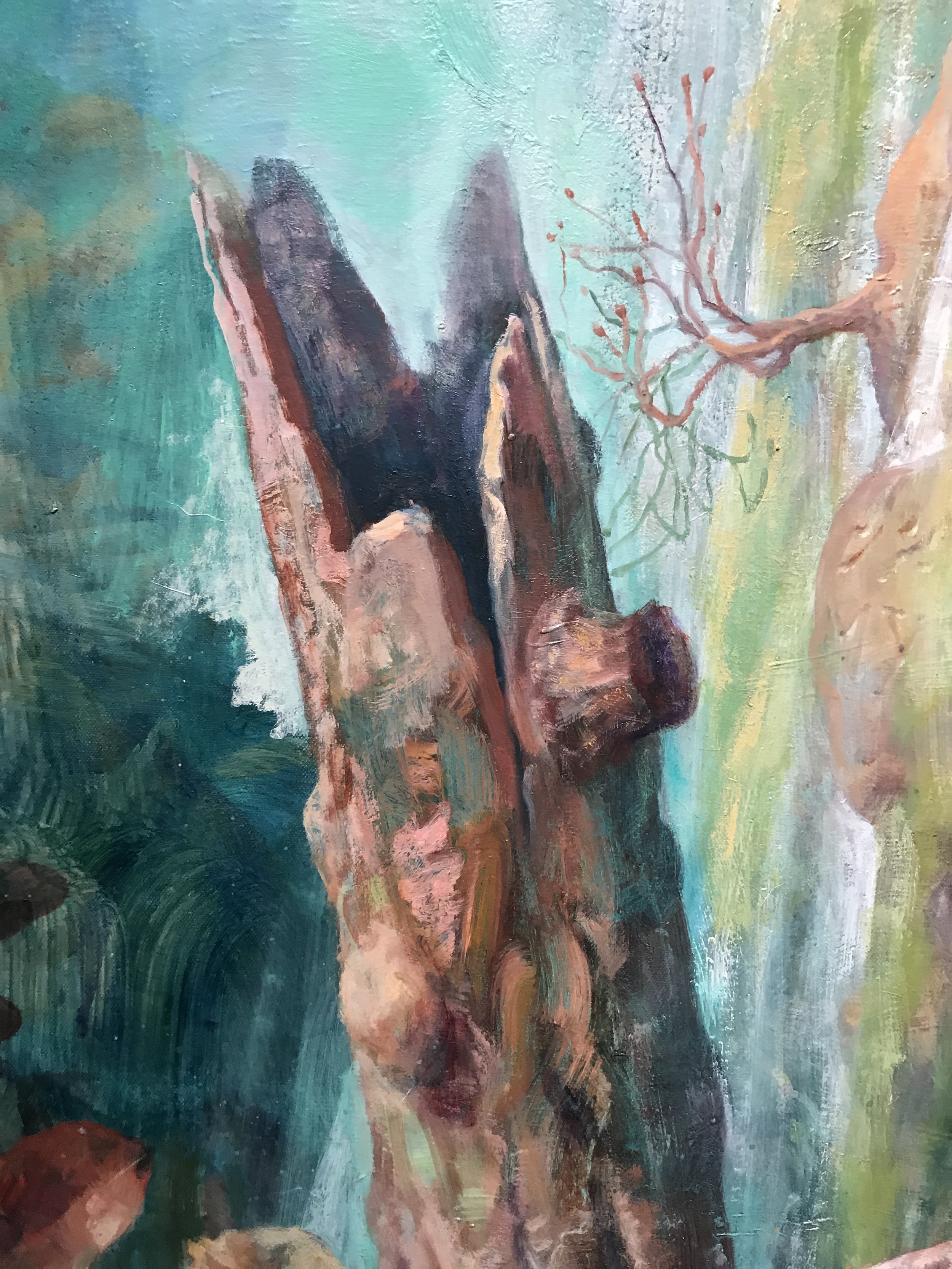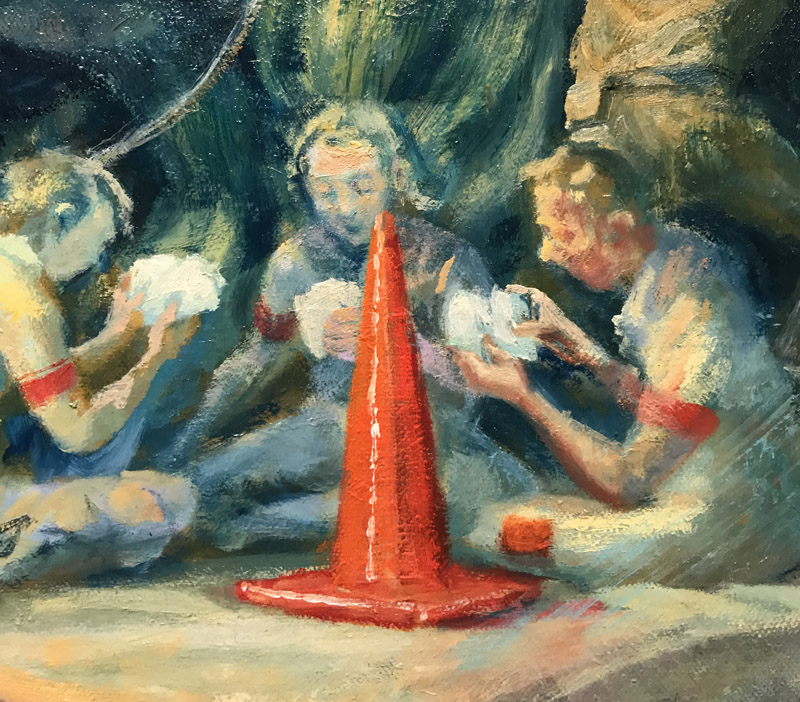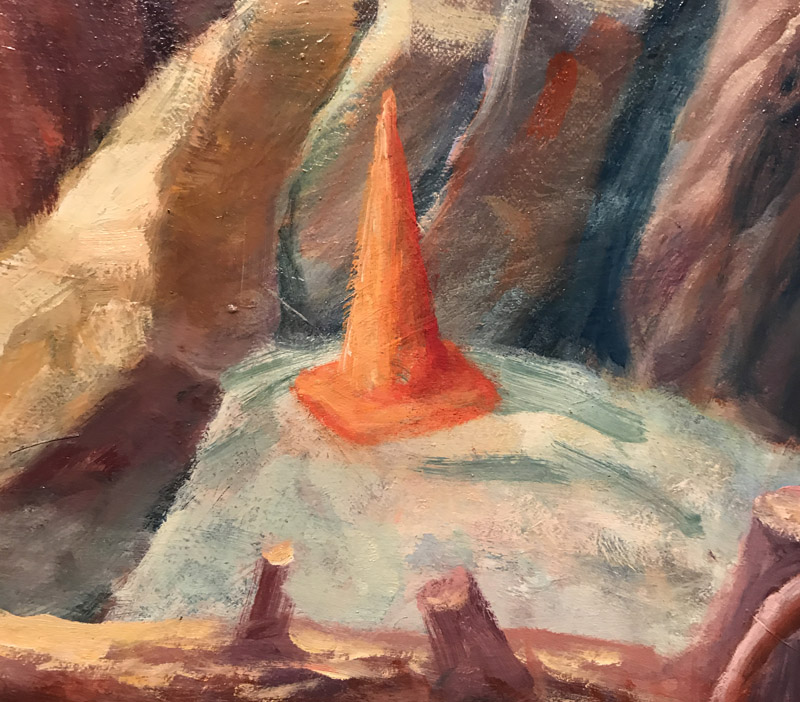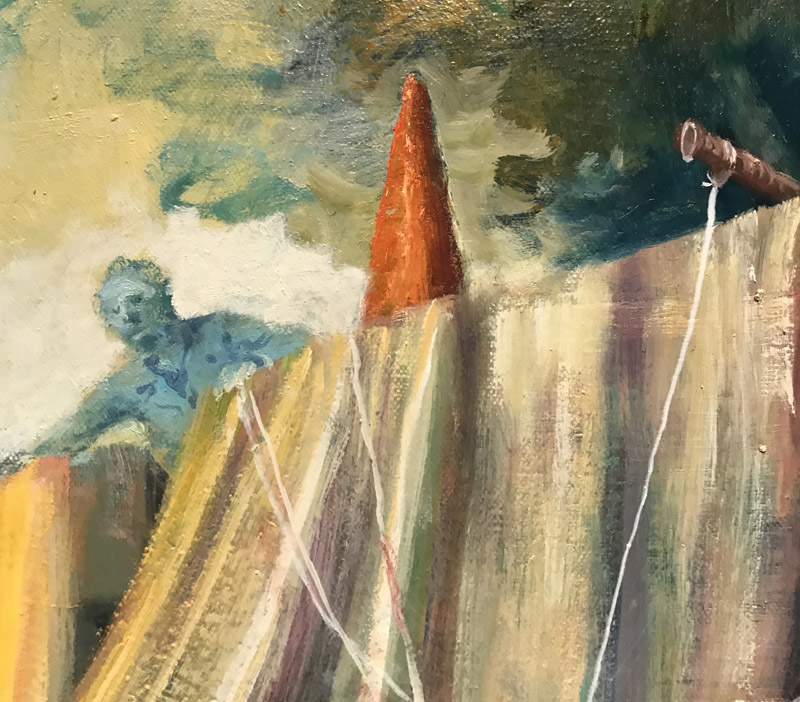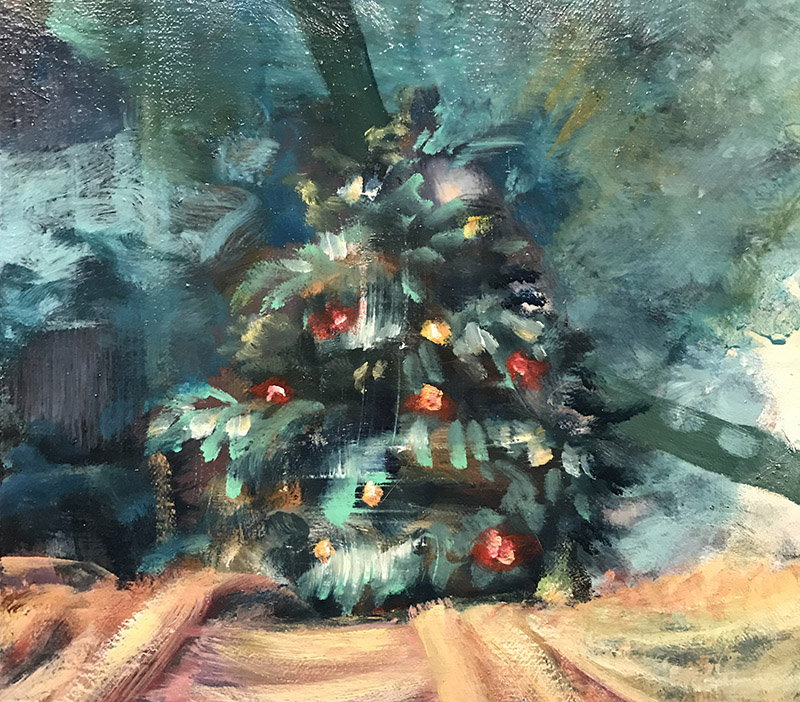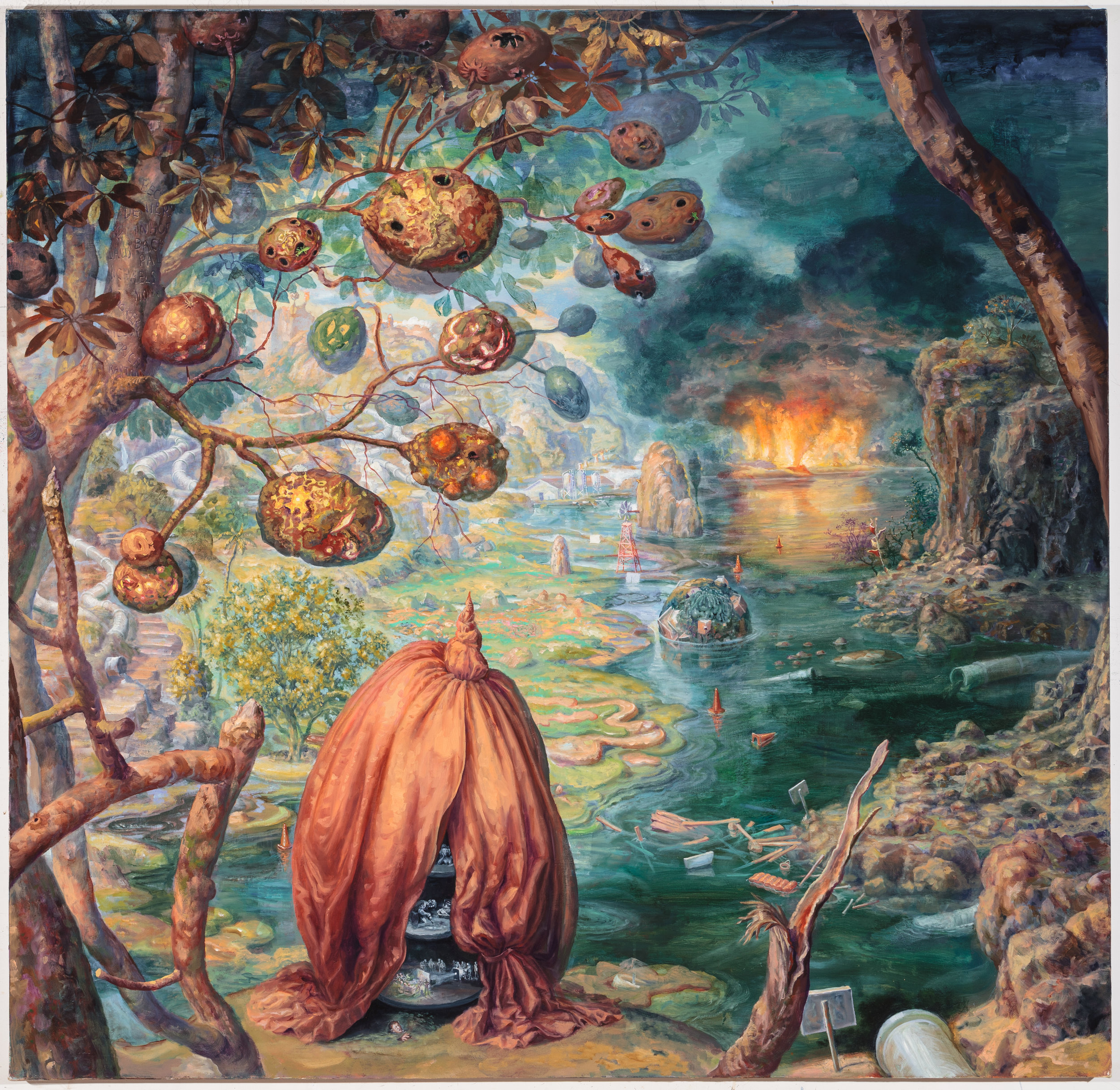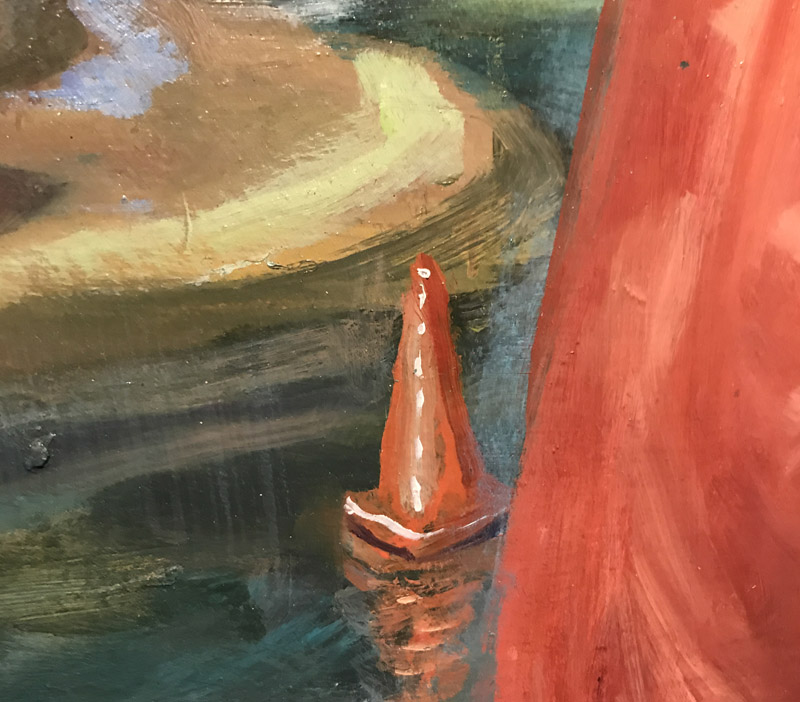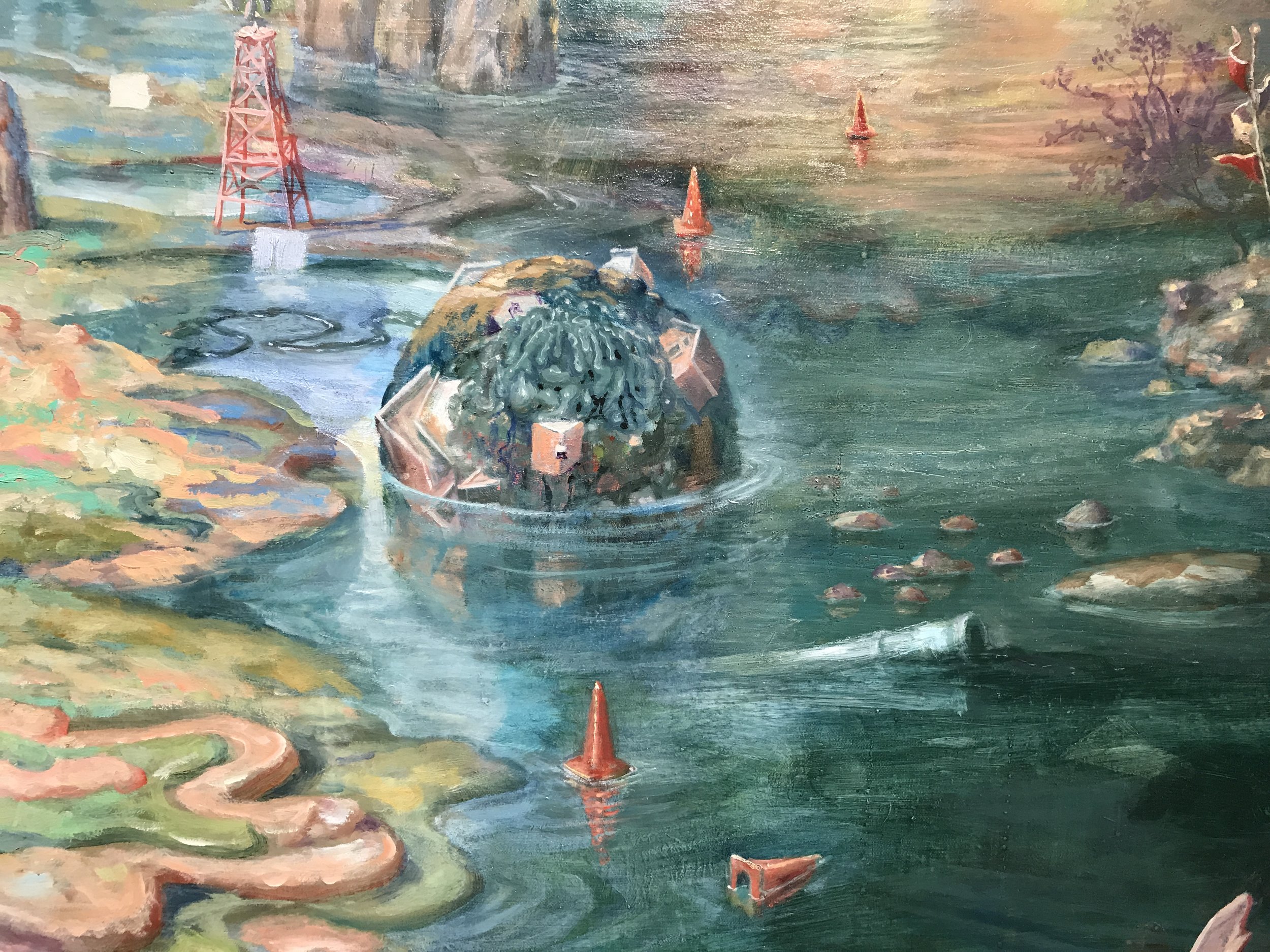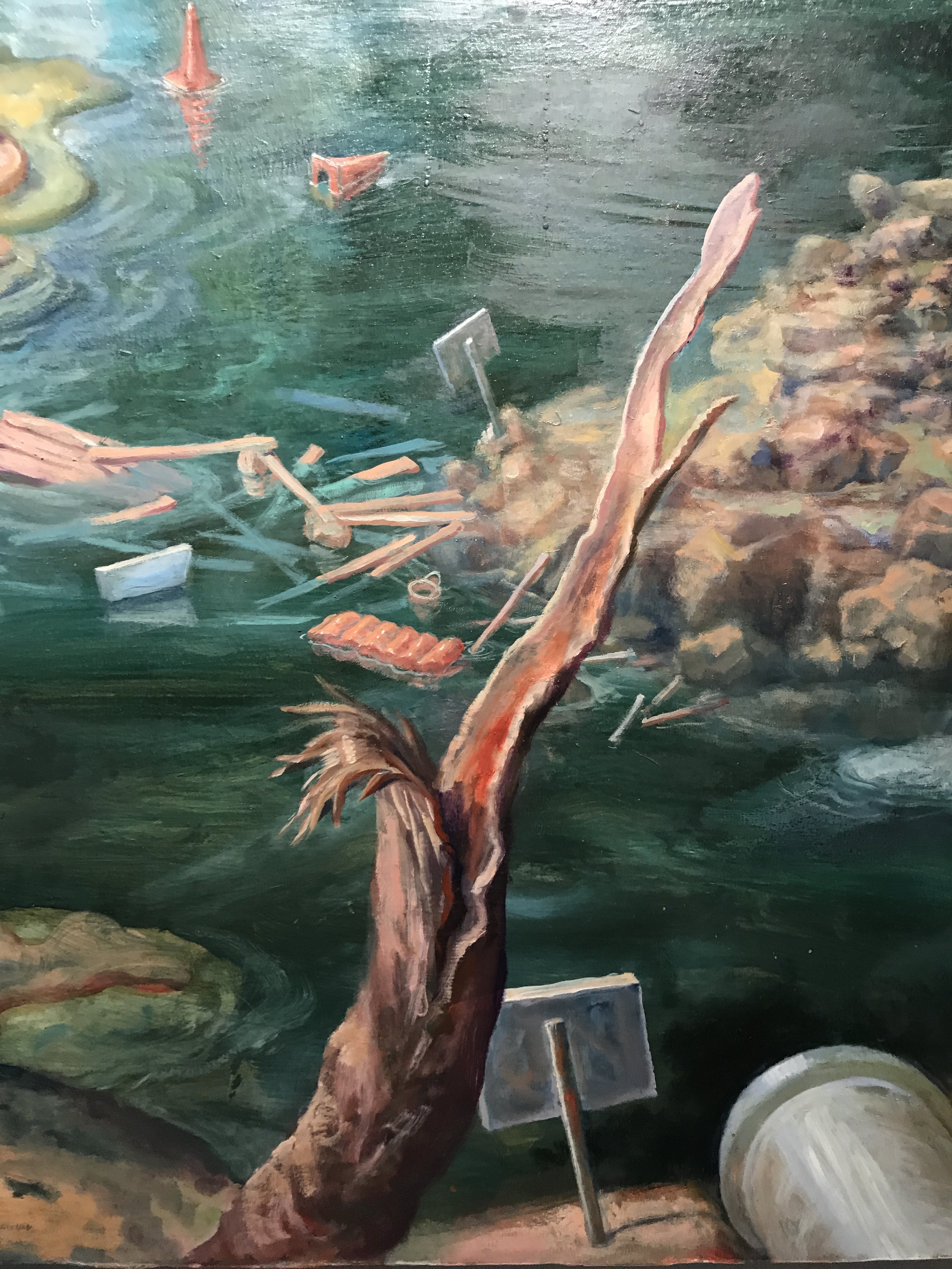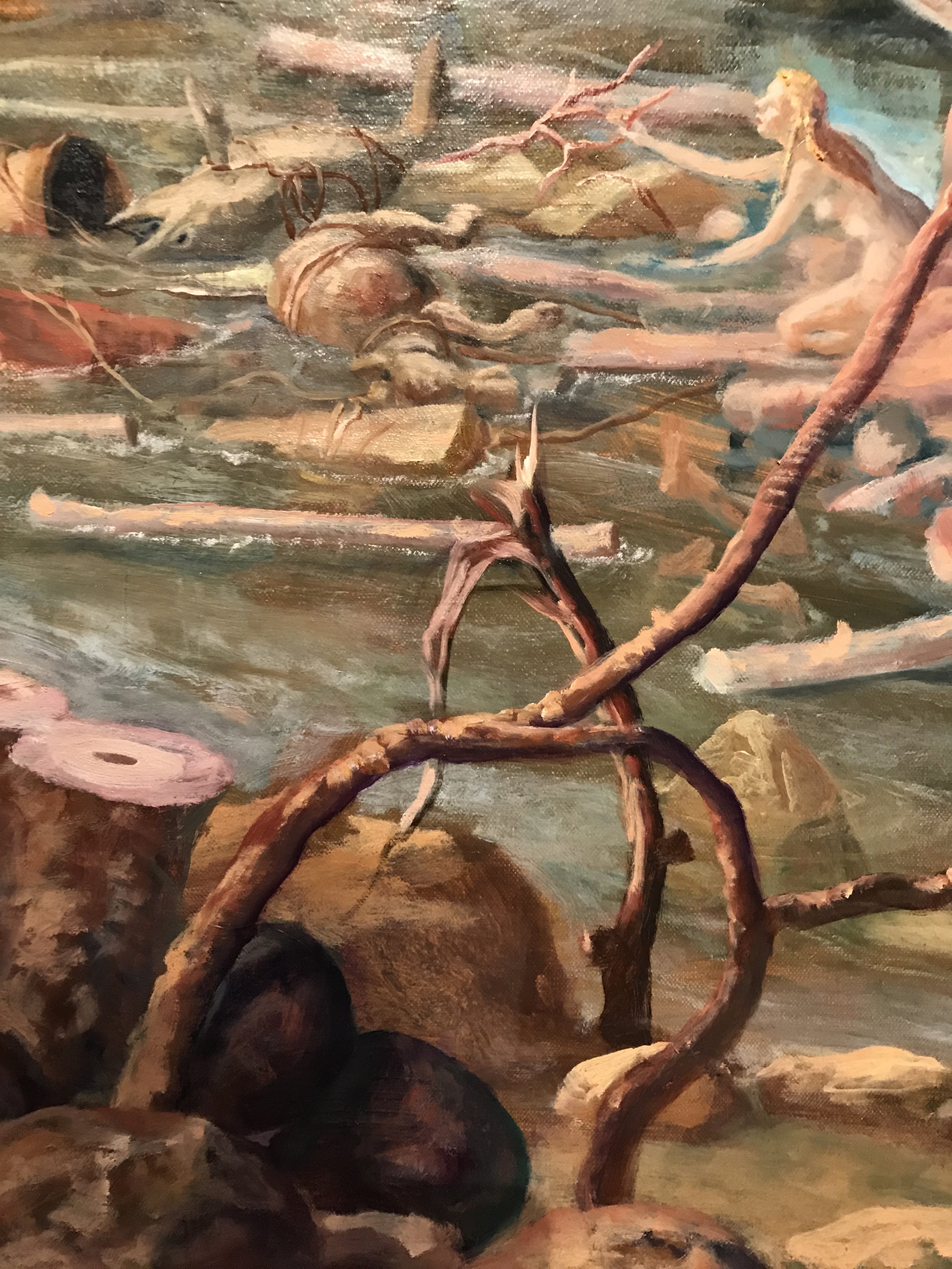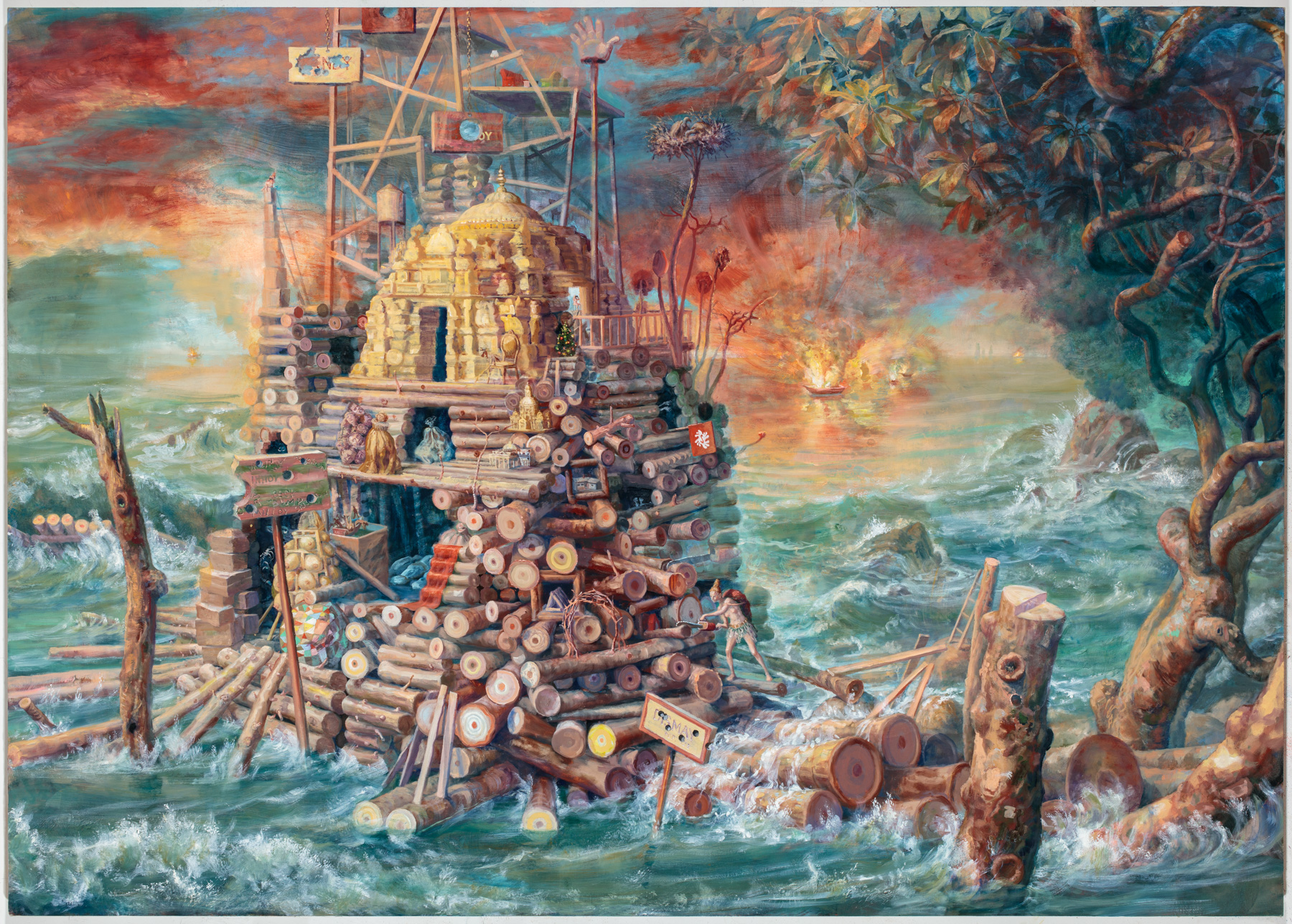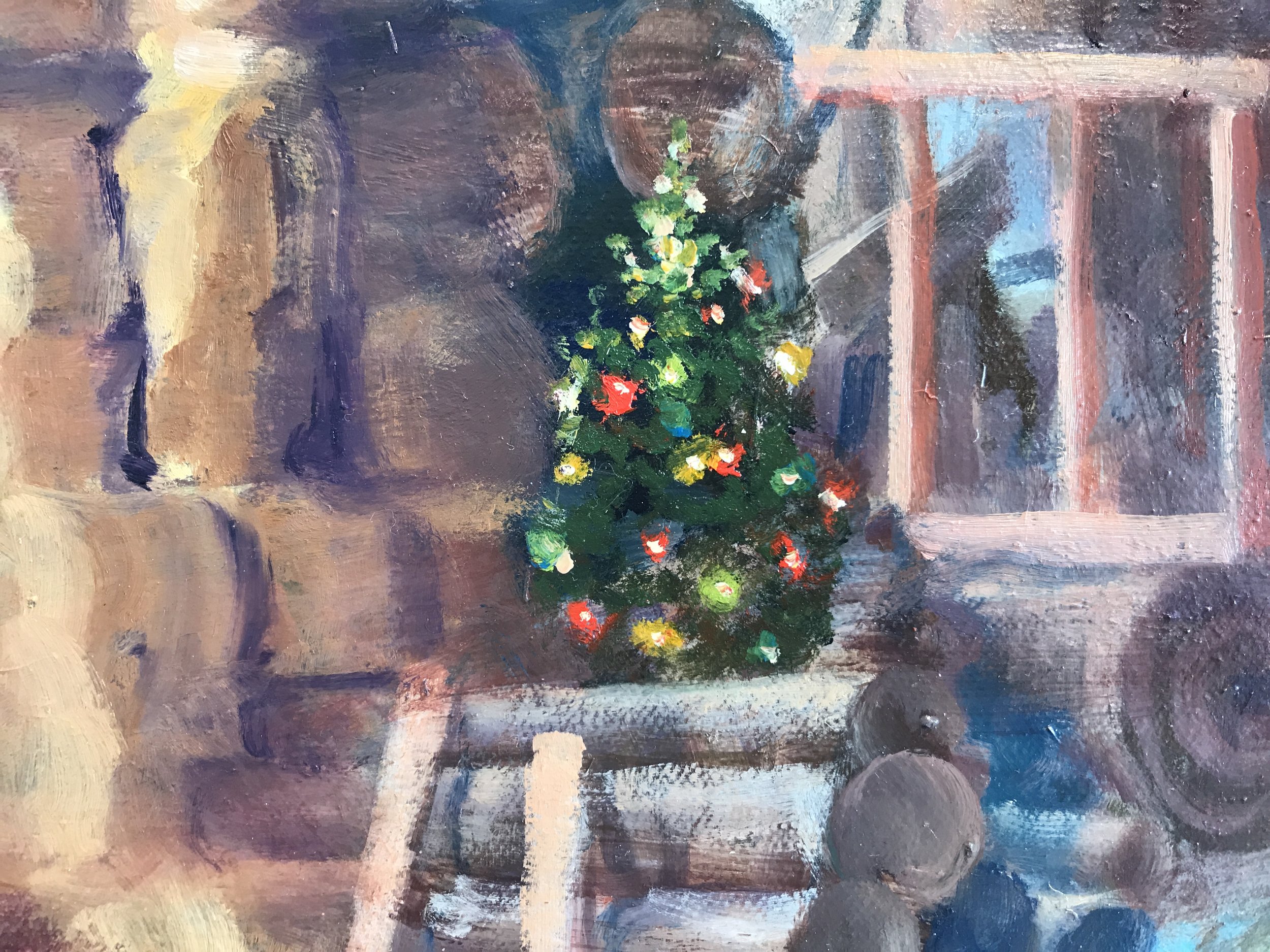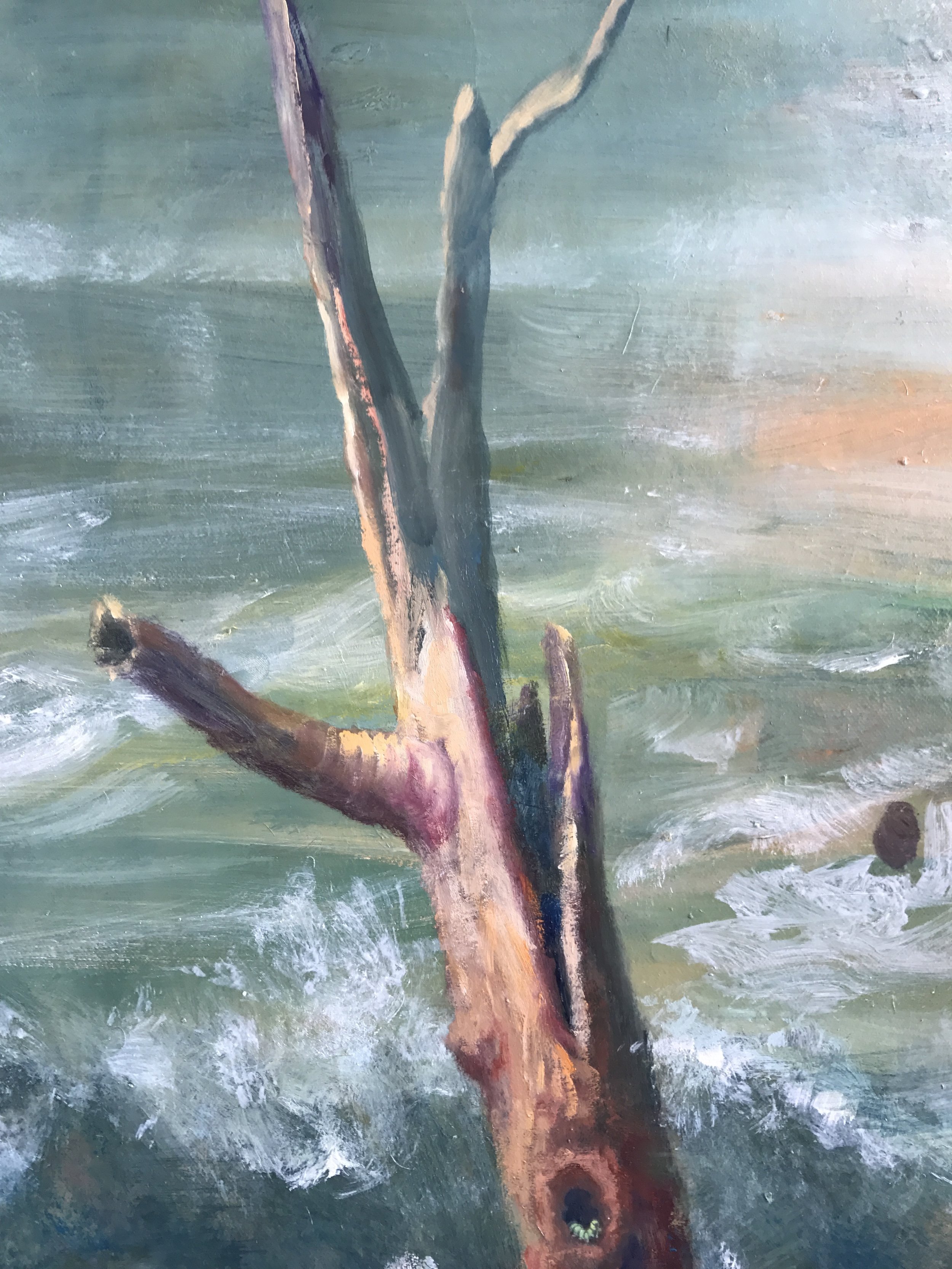By Courtney Taylor
There’s an incredible amount to take in in Julie Heffernan’s eleven large narrative paintings on display in LSU MOA’s exhibition, When the Water Rises. These paintings contain multiple, unresolved narratives with different groups of figures engaged in ambiguous activities—are they reeling or healing, hurting or protecting, destroying or saving—the answer remains unclear. It is likely and/both, not either/or.
Heffernan uses a few visual motifs to signal themes of narratives in her tableaux that recur in several paintings. Among these are splintered branches, construction cones, and Christmas trees.
Fractured trees signal collapse, disaster, and destruction. Heffernan’s work responds to recent environmental disasters like Hurricane Katrina, Superstorm Sandy, the Deepwater Horizon Oil Spill, and the Floods of Baton Rouge. Heffernan uses splintered trees to signal the violence associated with these disruptive events which are sometimes of our own making. She also uses this symbol high up in trees with lone figures. The broken branches suggest that the figures are complicit in the damage to these branches—even their attempts to safeguard bounties might result in destruction. Heffernan points to the complexity of the predicament in which we find ourselves.
Construction cones often dot the visual pathways into Heffernan’s paintings. Cones guide the eye on the wayward journey through the multiple stories within the larger story. The bright orange construction cones warn of the problems we will encounter along our own journey to contend with unpredictable effects of global warming.
Christmas trees, perhaps the most unexpected motif, pop up high in trees or on temple-like rafts as if they’ve been safeguarded. In other paintings, figures drag Christmas trees toward piles of detritus that will be discarded. Heffernan wonders what things we surround ourselves with currently will remain useful—will be worth saving in our changed Earth. Her paintings ask us to imagine how we will respond, what we will take with us, what we value. Christmas trees are disposable consumer item—kitsch and unneeded in so many ways. Still, they also signify coming together, some level of creative expression, and memories of family experiences that seem worthwhile to carry forward.
In an unknown future, Heffernan recognizes and warns of the danger, wonders what how we will carry on, but seems sure that we will and that creativity will be invaluable to the endeavor.
Courtney Taylor is LSU MOA's curator.
This exhibition is accompanied by a fully illustrated catalogue with essays by curator Courtney Taylor, art critic and writer Eleanor Heartney, and LSU Professor of Art Kelli Scott Kelley. Visit the LSU Museum of Art Store to get your copy today, or call 225-389-7210 for shipping information.

